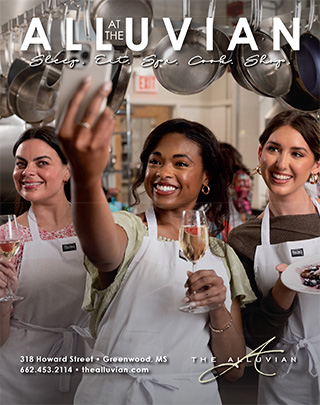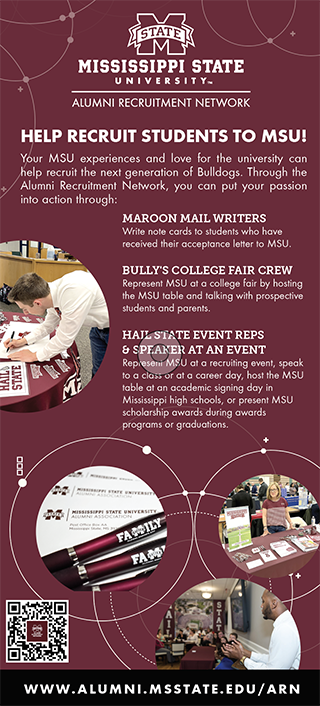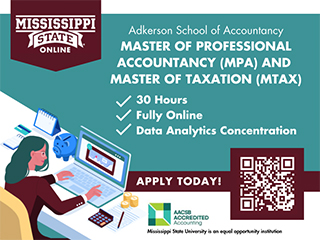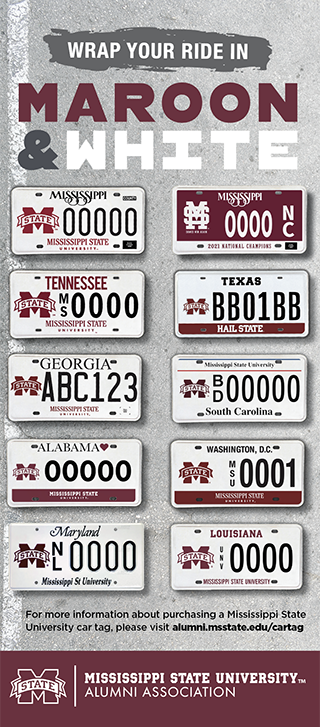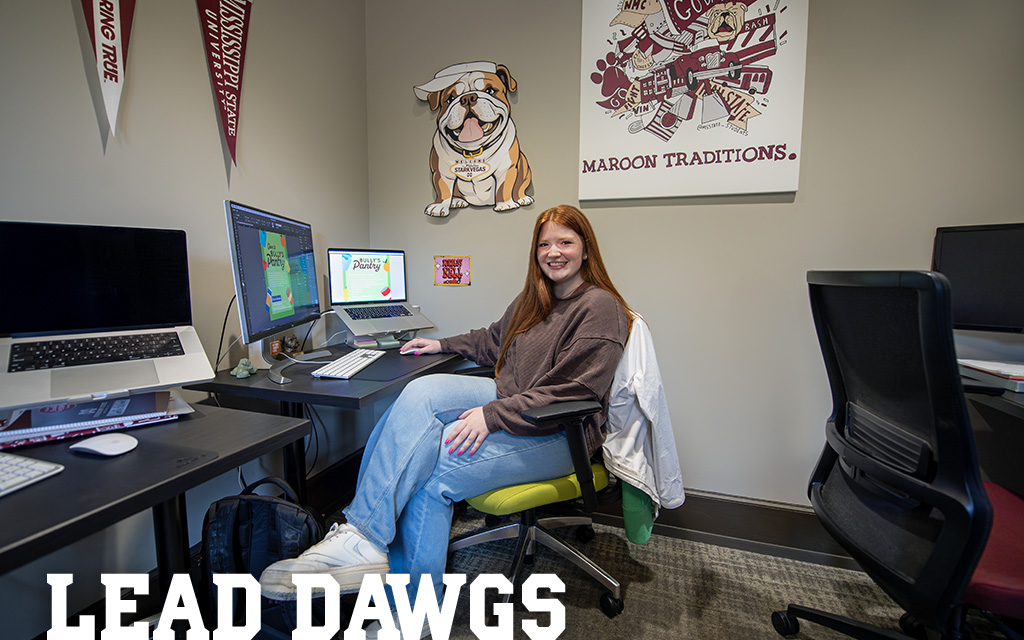
MSU gives students strong pathways to successful careers
After switching universities and changing majors from pre-med to graphic design, Kinsley Bell had to start her academic career from scratch. Wanting to catch up to her peers, the Mississippi State transfer student started searching for opportunities to hone her skills and boost her résumé.
Bell began working as a marketing and communication student worker for MSU Student Affairs. Now two years into the position, she’s not just caught up to her peers. The MSU senior believes her experience has propelled her much further.
“I’ve developed a better eye for design,” she said. “I’m the go-to typography person, and I’ll graduate with two years of graphic design experience. I feel like I’ve been working in this pseudo-corporate world. I have deadlines and manage multiple projects. It’s set me up with confidence in job interviews.”
Equipping students with these transferable skills is at the heart of MSU’s Maroon Leadership, Employment, and Development for Students, or L.E.A.D.S., initiative—a universitywide effort to create intentional, career-focused practices across all student jobs on campus to enhance career readiness for Bulldogs.
Building strong leaders
Regina Hyatt, MSU’s vice president for student affairs, said Maroon L.E.A.D.S. turns these jobs into stronger stepping stones for students’ futures.
“We know that on-campus employment can be a high-impact practice,” Hyatt said, “but only when intentional efforts are in place. It’s not just a job; it’s an opportunity to solve problems, get feedback from supervisors and develop teamwork skills.”
As part of the L.E.A.D.S. initiative, student employees complete a LinkedIn Learning course focused on the top eight competencies employers seek. Each module allows students to apply their learning to their jobs and discuss insights with their supervisors.
Hyatt said her own experience as a student worker helps her understand the impact these positions can have on undergraduate students. While at Western Illinois University, she worked as a resident assistant—a fitting opening act of her career.
“Working as a resident assistant was my first introduction to what working in student affairs would be like,” she said. “I hadn’t considered working in student affairs when I became an RA, but later in my undergraduate student experience, that became the pathway I wanted to go down.”

Mentoring and growing
In addition to preparing students for careers, the L.E.A.D.S. initiative aims to connect more students with on-campus opportunities and provide resources that will help them not only graduate but also advance in their careers. By serving as a central hub, Maroon L.E.A.D.S. makes it easier for students to discover available positions relevant to their career goals.
But the program goes beyond teaching students the technicalities of a job. It helps prepare supervisors to play a key role in guiding students in the development of valuable soft skills they may not even recognize they’re learning.
“Students are doing customer relations and conflict management,” Hyatt said. “A major part of this initiative is helping students articulate their learning in a way that will benefit them when they enter the job market.”
For Bell, the benefits of her student job have been immediate.
“I’ve learned how to professionally communicate design and the processes behind it,” she said. “My supervisors, coworkers and other university professionals helped me see the value of my work. They’re really good at knowing when to treat you like a student versus when to treat you like a team member in the office.”
Serving vital roles
While this initiative benefits students by preparing them for post-graduation success, it also provides a much needed service to the university as a whole as the more than 2,700 students serving these roles provide a distinct perspective. Serving in these campus roles, the student workers know the target audience and make those on-campus environments welcoming to their peers.
As MSU’s largest employer of student workers, University Recreation provides nearly 200 campus jobs, including operating services at MSU’s Sanderson Center and the university’s intramural fields. Patrik Nordin, director of university recreation, said his experience as an MSU student worker shaped his own career and he’s happy to give that opportunity to today’s Bulldogs.
“As a student worker here, I developed self-confidence through the work I did and learned conflict resolution and time management,” he said. “It’s hard to list how many ways it helped me grow and I’m happy to continue that tradition with students today.”
With Nordin’s position, he regularly sees the growth and changes students go through from their freshman year to graduation.
“These student workers develop leadership skills,” he said. “It’s almost like night and day from when they first started. Our student workers have a definite advantage over new graduates who don’t have a student employment experience on campus.
“I get to see them grow over the course of four years,” Nordin continued. “They come out of their shell, become more self-confident and their communication skills improve significantly.”
By Mary Pollitz, Photos by Emily Grace McCall
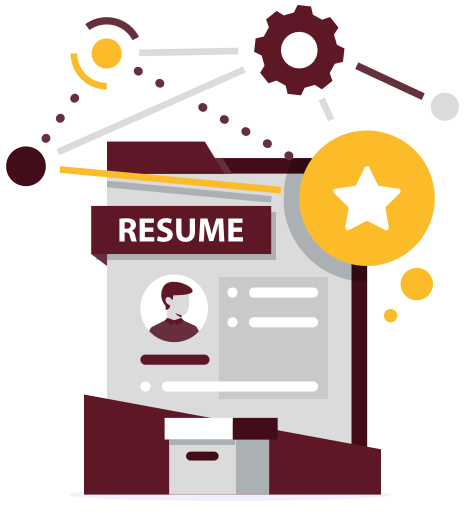
Rehab Your Résumé for Today’s Job Market
Whether you’re a student looking for a first job or a seasoned professional looking for your next opportunity, a strong résumé is the first step to getting through the door
The last decade has ushered in lots of changes to what employers want to see on your list of qualifications, as well as automated sorting and scoring of applications. The MSU Career Center has tips to help members of the Bulldog family move to the front of the pack in today’s competitive job market.
- Ditch the objective statement. Replace it with a strong professional summary that highlights your value, experience and key skills tailored to the role you’re targeting.
- Keep formatting simple and scannable. Use clean fonts, consistent headings and bullet points. Avoid graphics, tables or columns that might confuse applicant tracking systems.
- Use keywords to beat the bots. Review the job description and naturally incorporate key skills and industry-specific terms. Many companies use AI screeners, so aligning your resume language helps you stand out.
- Show results, not just duties. When possible, focus on accomplishments using metrics, for example “Increased annual revenue by 15%” or “Led a team of 10 to launch a new product line.”
- Limit your resume to one or two pages. For most professionals, a one-page résumé is ideal unless you have extensive, relevant experience. Keep it concise, tailored and easy to read.
Want more tips for job-hunting success? The MSU Career Center has programs to support both students and alumni. Have expertise you want to share? The Career Center also facilitates mentoring between alumni and current students. Visit career.msstate.edu to learn more.




